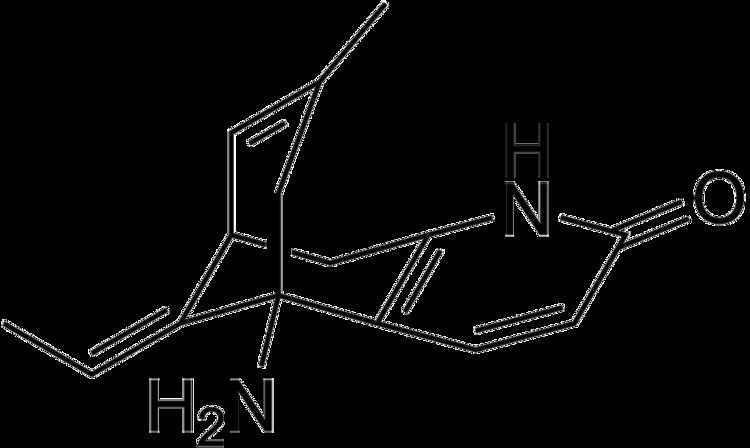Routes ofadministration Oral Biological half-life 10-14h CAS Number 102518-79-6 Formula C15H18N2O Melting point 217 °C | Synonyms HupA PubChem CID 854026 Molar mass 242.32 g/mol CAS ID 102518-79-6 | |
 | ||
IUPAC ID (1R,9S,13E)- 1-Amino- 13-ethylidene- 11-methyl- 6-azatricyclo[7.3.1.02,7] trideca- 2(7),3,10- trien- 5-one | ||
Huperzine A is a naturally occurring sesquiterpene alkaloid compound found in the firmoss Huperzia serrata and in varying quantities in other Huperzia species, including H. elmeri, H. carinat, and H. aqualupian.
Contents
Huperzine A has been investigated as a treatment for neurological conditions such as Alzheimer's disease, but a meta-analysis of those studies concluded that they were poor quality and the findings should be interpreted with caution.
Pharmacological effects
Huperzine A is extracted from Huperzia serrata. It is a reversible acetylcholinesterase inhibitor and NMDA receptor antagonist that crosses the blood-brain barrier. The structure of the complex of huperzine A with acetylcholinesterase has been determined by X-ray crystallography (PDB code: 1VOT; see the 3D structure).
For some years, huperzine A has been investigated as a possible treatment for diseases characterized by neurodegeneration, particularly Alzheimer's disease. A 2013 meta-analysis found that huperzine A may be efficacious in improving cognitive function, global clinical status, and activities of daily living for individuals with Alzheimer’s disease. However, due to the poor size and quality of the clinical trials reviewed, huperzine A should not be recommended as a treatment for Alzheimer’s disease until further high quality studies confirm its beneficial effects.
Huperzine A is also marketed as a dietary supplement with claims made for its ability to improve memory and mental function. Huperzine A has also been postulated as a potential treatment for myasthenia gravis.
Adverse effects
Huperzine A may present with mild cholinergic side effects such as nausea, vomiting, and diarrhea.
The use of huperzine A during pregnancy and lactation is not recommended due to the lack of sufficient safety data.
Drug interactions
Huperzine A may have additive effects if taken with drugs causing bradycardia, such as beta-blockers. which may decrease heart rate.
Theoretically, there may be possible additive cholinergic effects if huperzine A is taken with other acetylcholinesterase inhibitors or cholinergic agents.
Synthesis
Two scalable and efficient total syntheses of huperzine A have been reported.
